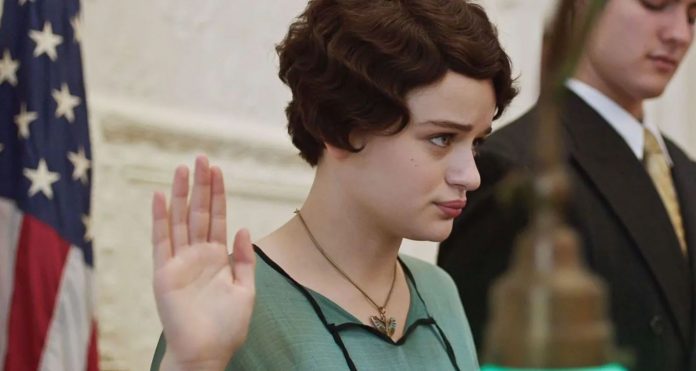Dailynewsun Entertainment Desk
A previously hidden figure of the spy world is finally being recognised in a new film. It’s one of several recent movies about real women and resistance, says Caryn James.
No one saw Virginia Hall coming. An American working for British intelligence during World War Two, she had lost a leg in a hunting accident years before. She named her prosthetic leg Cuthbert, and went on to become the first woman field agent sent into France before and during the occupation. She set up spy networks and safe houses, and engineered a prison escape and the explosion of Nazi supply lines.
The Nazis derisively named her the ‘Limping Lady’, but so feared her that Klaus Barbie, among the most savage of Nazi leaders, ordered an urgent search for the woman he called the most dangerous of all Allied spies. She was never caught, and escaped France by trekking 35 miles (56km) across the icy Pyrenees, in constant pain from Cuthbert. All this is depicted with dramatic flair in A Call to Spy, a new film that is one of many recent dramas to reclaim underappreciated women in history.
Lydia Dean Pilcher, the director of A Call to Spy, is also co-director of another new fact-based drama, Radium Girls, about two sisters in New Jersey in the 1920s who sued a factory whose workers were being poisoned by radium. The films are part of a trend that includes the 2016 hit Hidden Figures, about the black women who helped shape the US space program, and this year’s Ammonite, with Kate Winslet as Mary Anning, who made groundbreaking discoveries in palaeontology. With the MeToo movement sparking new interest in women’s rights and autonomy, these heroines speak to the present through their unrelenting battles against the sexist establishments of their day. None of their lives was more dramatic than Virginia’s.
Sarah Megan Thomas plays Virginia and also wrote the screenplay, which weaves together her character’s story with those of two other real-life heroines of the war. The Romanian-born Vera Atkins (Stana Katic) worked for the British Special Operations Executive, known as Churchill’s Secret Army, recruiting women agents at a time when that was a novel concept. One of her recruits, the Anglo-Indian Noor Inayat Khan (Radhika Apte), went to France as a wireless operator, the most dangerous assignment. Virginia’s story is central, though, beginning with her fight to become an agent despite her gender and physical disability. “It’s the perfect cover,” Vera says when advocating that Virginia should go to Lyon posing as a journalist. “No one would suspect a pretty American reporter with a limp of being guilty of anything.”
The film doesn’t reinvent the spy genre, but uses it effectively, creating suspense and near-misses whenever the Nazis approach. Virginia arrives in France, and immediately plots a dangerous nighttime flight to get an injured British agent back to London. She later steels herself and walks calmly by as the Nazis shoot a member of her cell on the street.
Resistance is a common thread in both A Call to Spy and Radium Girls
Like most of the films reclaiming women’s stories, this one focuses on the years of her greatest achievements. Virginia simply mentions her past in her first interview with Vera. She had tried to join the US intelligence service, but the State Department rejected her because of her prosthetic. She went to France as a wartime ambulance driver instead, and later worked in the office of the American Embassy in London. While A Call to Spy is true to the basic facts and trajectories of its heroines’ careers, it fictionalises their relationships. Vera knew Virginia, but did not recruit her as she does in the film. The real-life Noor worked for Vera, but she and Virginia did not share a room during their SOE training and meet again in France as they do on screen. The changes, Thomas says, “allowed me to put Noor and Virginia together in time and space, like Hidden Figures did. I call them the hidden figures of the spy world. That film was 100 per cent a reference”.
Danger and drama
Resistance is a common thread in both A Call to Spy and Radium Girls, which Pilcher co-directed with one of its screenwriters, Ginny Mohler. Radium Girls begins in 1925 in a factory where women paint glow-in-the-dark numbers on the faces of watches. They lick the brushes, loaded with paint containing radium, to draw more precisely. The company, American Radium, also sells radium-infused water as a magic elixir. The heroines are based on real-life sisters who sued the company they worked for, and discovered that the owners had known about the lethal danger of radium for years.
The report has been published by BBC.
































